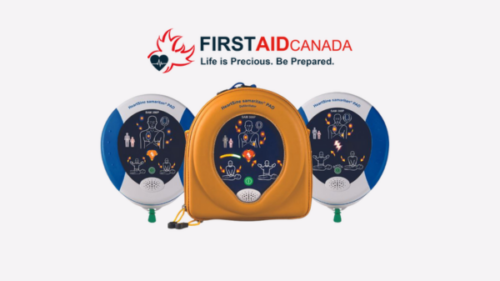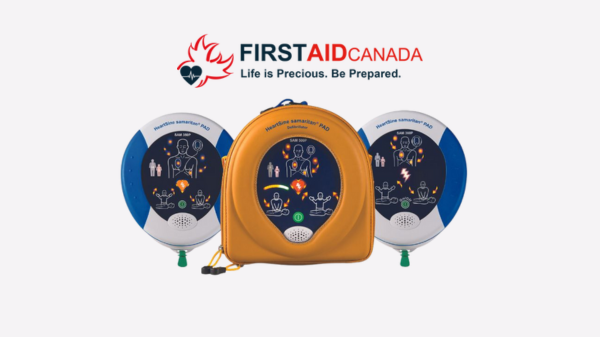
What is an Automated External Defibrillator?
If you haven’t heard by now, an AED is a medical device that is designed to restore a normal heartbeat to a distressed individual by sending a corrective electric pulse to their heart. It may be used to stop or correct an arrhythmia, which is a heartbeat that is irregular, too slow, or too fast. Though it may seem intimidating at first, these devices have been tailored for public use and require minimal training. Many health and safety-conscious companies are placing defibrillators in their workspaces, so read on and learn how to use an AED in Ontario and across Canada.
It Starts With Rhythm: AEDs Check the Beat First
The human heart is supposed to work at a regular pace, pumping blood at a steady rhythm and not deviating too much from its average speed. There are certain situations, however, that may trigger arrhythmia or irregular/uneven heartbeat. Medical technology has advanced to the point where an AED is capable of checking an individual’s pulse for its rhythm to determine whether that rhythm is normal or not. In other words, an individual does not have to be a trained medical professional to opt confidently for the AED. This machine is designed to correct the discrepancy and restore normal, healthy heart function when needed.
Sometimes the Rhythm Stops: How to Handle
Sudden Cardiac Arrest sounds severe and scary, and it should. But using an AED should not. Cardiac arrest strikes when a person’s heart suddenly stops beating unexpectedly. If left untreated, sudden cardiac arrest causes death within minutes. This is why public health initiatives to place AEDs in Ontario and across Canada are so vital; with a healthy spread and selection of defibrillators placed strategically in work and public places throughout the country, sudden cardiac arrest and arrhythmia will become much less deadly and far more treatable.
Pay Attention: The Device Tells All Its Secrets
Fortunately, AEDs are portable. Every AED is outfitted with electrodes, or sticky pads with sensors, and a computer. All a bystander needs to do is attach the electrodes to the chest as shown explicitly on the pads and let the machine do its work. The electrodes sense the heartbeat of the afflicted party and will send information to the computer, that will determine what kind of electric shocks the person needs to get their heart working. If the computer determines that shocks are necessary, it sends them through the electrodes. Each AED has a detailed picture guide to ensure correct placement, written instructions as well as vocalized instructions to talk bystanders through these simple steps. Various languages are available as well so prepare your space accordingly.
With AEDs all over the country and an AED close to at-risk individuals, deaths from cardiac arrest will decrease dramatically. Everyone will be able to handle these medical emergencies thanks to this convenient medical technology.

